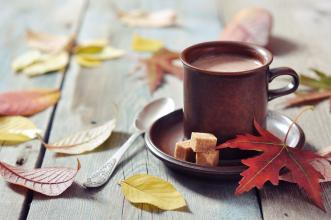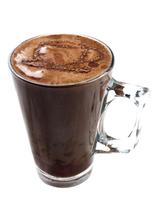Introduction to flavor description of high-quality coffee beans in Colombian coffee producing area
After the founding of the United States, there was a dispute over the location of the capital. The North wants to locate its capital in New York. And the south wants the capital to be located in the south. In the end, both the North and the South of the United States
Washington, D.C. Flag
Washington, D.C. Flag
Give in and build a new city as the capital of the United States in the south not far from the north. The location is located by Madison (James Madison,1751-1836, the fourth President of the United States) and Alexander Hamilton (Alexander Hamilton, January 11, 1757-July 12, 1804, one of the drafters of the Constitution, was the first Treasury Secretary of the United States) in Thomas Jefferson (April 13, 1743, ─ was the third President of the United States on July 4, 1826). It was also discussed at a dinner invited by the main drafter of the American Declaration of Independence. At that time, the "federal" city was planned as a diamond area covering an area of 100 square miles. Its actual location on the Potomac River is determined by President Washington, who himself suggested that the capital of the United States be called a "federal city." But on September 9, 1791, the capital of the United States was named Washington. Although Washington himself lives in Mount Vernon not far from Washington, he seldom visits Washington.
The main varieties of Colombian coffee are small grains of coffee. Plants are small trees or large shrubs, 5-8 m tall, usually much branched at base; old branches gray-white, nodes dilated, young branches glabrous, compressed. Leaves thinly leathery, ovate-lanceolate or lanceolate, 6-14 cm long and 3.5-5 cm wide, apex long acuminate, acuminate part 10-15 mm long, base cuneate or slightly obtuse, rarely rounded, entire or shallowly wavy, both surfaces glabrous, lower vein axils with or without small pores; midrib raised on both surfaces of leaf, 7-13 on each side of lateral veins; petiole 8-15 mm long Stipules broadly triangular, arising from the tip of the upper part of the young branch conical or awn tip, the tip of the old branch is often protruding tip, 3-6 mm long. Cymes are several clustered in leaf axils, each with 2-5 flowers, without a total pedicel or with a very short peduncle; flowers fragrant, with pedicels 0.5-1 mm long; bracts basally more or less connate, dimorphic, of which 2 are broadly triangular, nearly equal in length and width, and the other 2 lanceolate, with a pure taste of Colombian coffee twice as long as wide, from Colombia's natural environment with the most favorable conditions for coffee growth. But beyond that, it is inseparable from the hard work of local growers. In Colombia, coffee cultivation has reached 1.07 million hectares, there are about 302000 coffee plantations in the country, and 30 to 40 per cent of the rural population depends directly on coffee production. Although there are many farms in Colombia, they are not large in area. The area of each farm is only about 2 hectares, and more than 80% of the coffee plantations have only about 5000 coffee trees, an average of 3000. Thus it can be seen that agriculture in Colombia belongs to the small-scale farm type. The locals plant tall trees or banana trees around the coffee trees. Build an Arbor for coffee trees at the seedling stage to ensure the cool and humid environment needed for coffee growth. Due to the high humidity, small temperature difference and slow ripening of coffee beans in the coffee forest, which is conducive to the accumulation of caffeine and aromatic substances, the quality of coffee is the best.

Important Notice :
前街咖啡 FrontStreet Coffee has moved to new addredd:
FrontStreet Coffee Address: 315,Donghua East Road,GuangZhou
Tel:020 38364473
- Prev

Rwanda Coffee Flavor Description Region Characteristics Roast Degree Boutique Coffee Bean Introduction
New administrative divisions were introduced on 1 January 2006. Rwanda is divided into four provinces (Rwandan: intara): Province de l'Est, Province du Nord, Province de l'Ouest, Province du Sud, Ville de Kigali and one municipality (Kigali), comprising 40 provinces.
- Next

Description of Hawaiian Coffee Flavor full of Flower fragrance introduction of fine coffee with taste in producing area
The earliest coffee cultivation in Hawaii had adopted the model of large-scale coffee plantations, and at that time, coffee had not yet become a widely grown crop in the world, and the production and sale of Kona coffee had experienced several ups and downs. After the outbreak of the first World War, the demand for coffee increased sharply. The government bought large quantities of coffee for soldiers in order to maintain their combat ability.
Related
- Detailed explanation of Jadeite planting Land in Panamanian Jadeite Manor introduction to the grading system of Jadeite competitive bidding, Red bid, Green bid and Rose Summer
- Story of Coffee planting in Brenka region of Costa Rica Stonehenge Manor anaerobic heavy honey treatment of flavor mouth
- What's on the barrel of Blue Mountain Coffee beans?
- Can American coffee also pull flowers? How to use hot American style to pull out a good-looking pattern?
- Can you make a cold extract with coffee beans? What is the right proportion for cold-extracted coffee formula?
- Indonesian PWN Gold Mandrine Coffee Origin Features Flavor How to Chong? Mandolin coffee is American.
- A brief introduction to the flavor characteristics of Brazilian yellow bourbon coffee beans
- What is the effect of different water quality on the flavor of cold-extracted coffee? What kind of water is best for brewing coffee?
- Why do you think of Rose Summer whenever you mention Panamanian coffee?
- Introduction to the characteristics of authentic blue mountain coffee bean producing areas? What is the CIB Coffee Authority in Jamaica?

